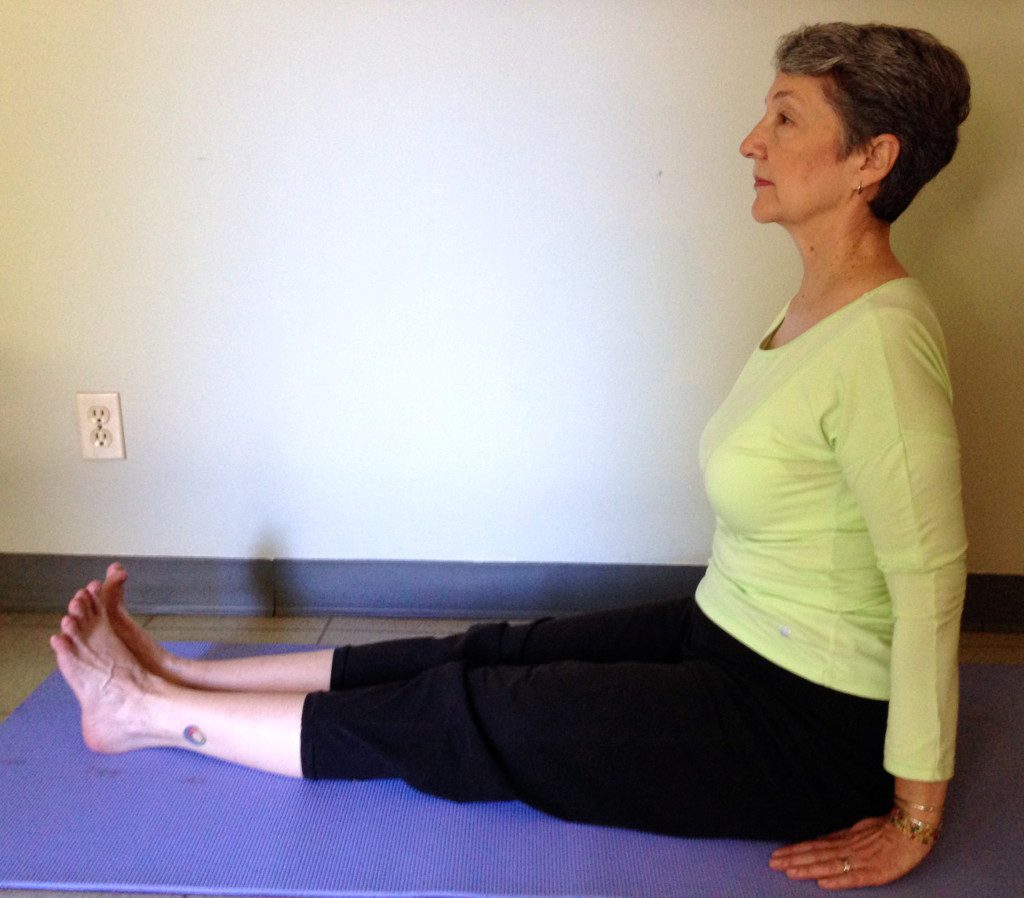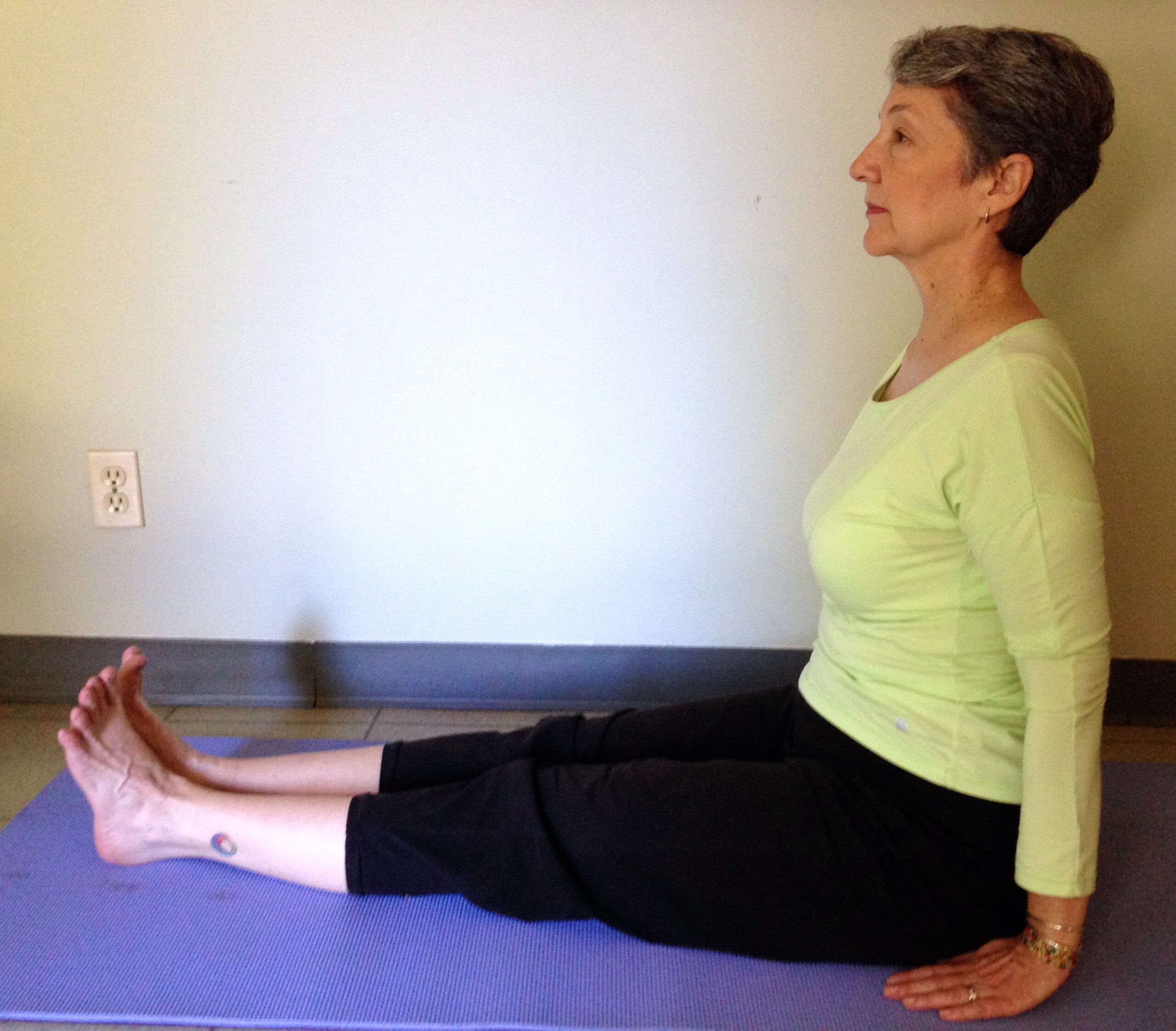Restorative yoga is a passive style of yoga where each pose (asana) is supported by props—bolsters, straps, blankets, blocks, chair, or wall. This support enables the practitioner to comfortably sink into a pose and hold it for 5 to 10 minutes. And that allows them to let go, be present, and completely relax in the moment. As with any type of exercise, it’s vital that we work within our own range of limits and abilities.
“A mind free from all disturbances is Yoga “ Patanjali
Although it’s deceptively easy in appearance, Staff Pose is an intense posture. Not only does it build strength in the stomach and upper back, but it also opens the chest making it easier to take deep, healthy breaths.
Because this basic pose provides the structural basis for many seated postures—including twists—so it’s important to include it in our daily practice.
Here’s How It’s Done
- Sit on your mat with your back upright forming a 90-degree angle with your legs.
- Adjust the flesh of each buttock so that your sit bones rest on the mat—distribute your weight
evenly between both sides. - Extended in front of your body, legs should be together.
- Slightly rotate your legs inward and engage your thigh muscles, pressing them firmly into the
mat. - Push out through your heels as you point your toes to the ceiling—keep your feet and knees
together. - Press your palms flat on the mat alongside each hip, fingers pointing forward.
- Draw your belly button in toward your spine, hold your chin parallel to the floor, and gaze
straight ahead - Anchor your body through your tailbone as you sit tall—stretching the top of your head toward
the ceiling, while drawing your shoulders away from your ears. - Imagine your spine as a “staff”—focus on maintaining the 90-degree angle alignment of your
body.
My shoulders are wide and my chest is open, allowing me to draw in deep, nourishing breaths.
Modification
Sit on your mat with your back against a wall—your sacrum and shoulder blades should touch the wall, while leaving a space between the wall and your head and your lower
back.
Most restorative yoga poses are held for between 5 and 10 minutes. As mentioned, this posture is deceptively easy in appearance. Try to maintain the Staff Pose for 1 minute or longer.
The Benefits
- Effective for improved posture
- Sciatica relief
- Diminishing the symptoms of asthma.
This asana also works to calm the chaos that some of us entertain in our minds, and can help to improve concentration.
Inhale. And Then Exhale. Let your heart gently ride the waves of each breath. Restorative yoga makes my body feel easy to wear, and comfortably at home. This is one of my favorite poses. Besides that, I love how I feel when I mentally affirm, “My shoulders are wide and my chest is open, allowing me to draw in deep, nourishing breaths.”
“
“















